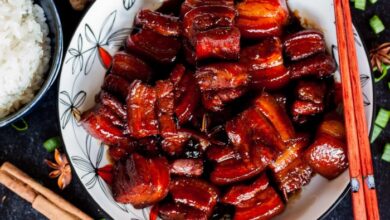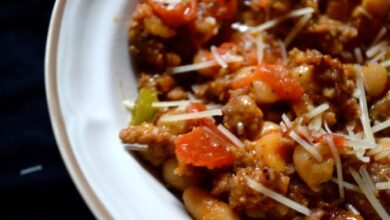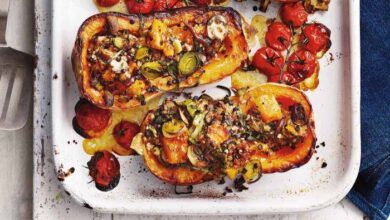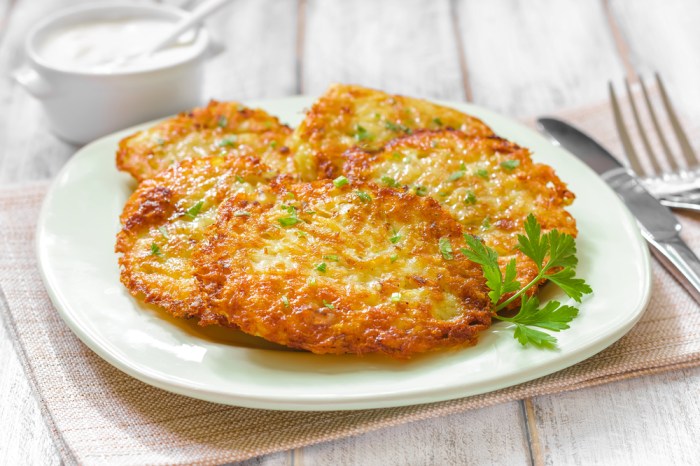
Old Fashioned Potato Cakes: A Timeless Treat
Old fashioned potato cakes, a simple yet satisfying dish, have been a staple in kitchens around the world for centuries. These humble cakes, made from grated potatoes, flour, and spices, offer a delightful blend of textures and flavors. From their humble beginnings as a peasant food to their evolution into a beloved comfort food, potato cakes have a rich history and cultural significance.
This article delves into the fascinating world of old fashioned potato cakes, exploring their origins, variations, preparation techniques, serving suggestions, and cultural impact. We’ll also uncover the nutritional value and health benefits of this beloved dish, along with modern interpretations and innovations that continue to inspire culinary creativity.
History and Origin of Potato Cakes
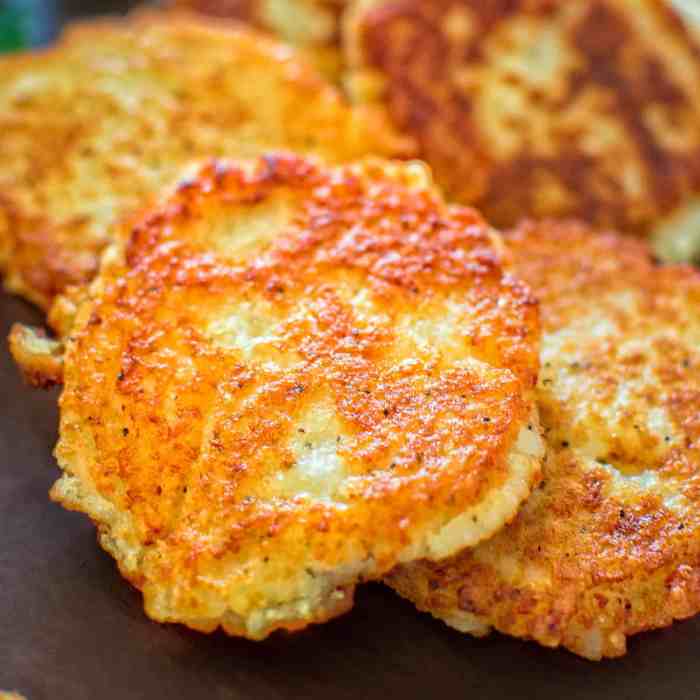
Potato cakes, those crispy, golden-brown delights, have a rich history spanning centuries and continents. These humble yet versatile dishes have evolved alongside cultures and culinary traditions, showcasing the adaptability of the potato as a staple ingredient.
Early Origins and Cultural Significance
The story of potato cakes begins with the potato itself. Originating in the Andes Mountains of South America, the potato was domesticated by indigenous peoples thousands of years ago. These early civilizations developed various ways to prepare and consume potatoes, including boiling, roasting, and grinding them into flour.
While the exact origins of potato cakes are difficult to pinpoint, it’s likely that early forms of these dishes emerged in these regions.
- Ancient Andean Cultures:In the Andean region, where potatoes originated, indigenous peoples likely created early forms of potato cakes. These early versions may have been simple, consisting of mashed or grated potatoes mixed with other ingredients like herbs, spices, or grains. These cakes were likely cooked over an open fire or on hot stones.
- European Colonization and Diffusion:The potato was introduced to Europe in the 16th century by Spanish explorers. Its adaptability and nutritional value quickly made it a popular crop, particularly among the lower classes. In the 17th and 18th centuries, the potato became a staple food in many European countries, leading to the development of various potato dishes, including potato cakes.
Old fashioned potato cakes, crispy on the outside and fluffy on the inside, are a classic comfort food. They pair perfectly with a tangy, sweet drink like a raspberry lemon drop martini , which balances the savory potato with its tart raspberry and citrus flavors.
The combination is a delightful reminder of simpler times, making every bite feel like a warm hug on a chilly evening.
Regional Variations and Cultural Influences, Old fashioned potato cakes
Potato cakes have taken on diverse forms and names across the globe, reflecting the unique culinary traditions and ingredients available in different regions.
Old fashioned potato cakes, with their crispy exteriors and fluffy interiors, always remind me of cozy evenings spent with family. While I love the simplicity of these classic cakes, sometimes I crave something sweet to accompany them. That’s when I reach for a batch of soft chewy rosh hashanah honey walnut cookies , their honeyed sweetness a perfect counterpoint to the savory potato cakes.
It’s a simple pairing, but one that always hits the spot.
- Germany:In Germany, potato cakes are known as “Kartoffelpuffer” and are often served with applesauce or sour cream. These cakes are typically made with grated potatoes, flour, eggs, and onions.
- Ireland:In Ireland, potato cakes are known as “boxty” and are a traditional dish made with grated potatoes, flour, and sometimes buttermilk. Boxty can be served fried, baked, or grilled and is often accompanied by bacon or sausage.
- Eastern Europe:In Eastern Europe, potato cakes are known as “draniki” or “latkes” and are typically made with grated potatoes, onions, and sometimes eggs. They are often served with sour cream or applesauce.
- United States:In the United States, potato cakes are a popular comfort food and can be found in various forms, from simple fried potato patties to more elaborate versions with fillings like cheese or meat.
Key Historical Events and Figures
The development of potato cakes was influenced by various historical events and figures.
Old-fashioned potato cakes, crispy on the outside and fluffy on the inside, are a classic comfort food. They’re perfect for a simple weeknight dinner or a cozy weekend brunch. If you’re looking for a warm and satisfying soup to pair with your potato cakes, I highly recommend checking out this recipe for absolutely ultimate potato soup , which is loaded with flavor and creamy goodness.
The soup is a perfect complement to the potato cakes, offering a delicious and comforting meal.
- The Potato Famine:In the mid-19th century, the Irish Potato Famine devastated Ireland, leading to widespread starvation and death. During this time, the humble potato cake became a symbol of resilience and survival for many Irish families. Boxty, a traditional Irish potato cake, was often the only food available to those who had lost their crops.
- The Industrial Revolution:The Industrial Revolution in Europe led to the development of new technologies, including improved methods of food preservation and transportation. These advances allowed potatoes to be more easily stored and transported, making them more readily available for use in dishes like potato cakes.
Ingredients and Variations: Old Fashioned Potato Cakes
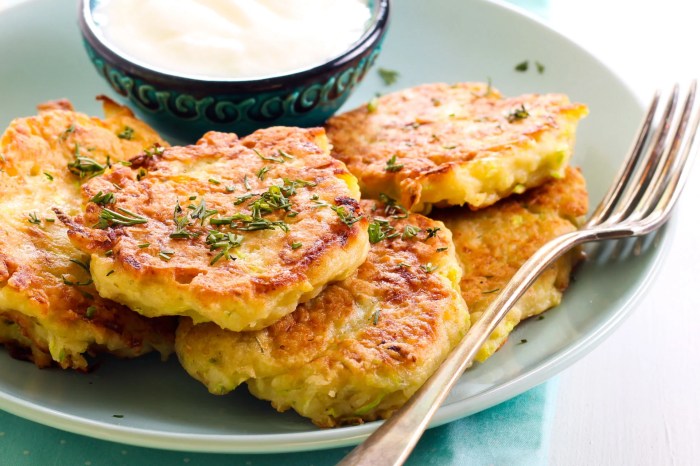
Potato cakes, in their simplest form, are a testament to the versatility of the humble potato. They can be enjoyed as a comforting side dish, a satisfying snack, or even a hearty main course. The basic recipe is straightforward, but variations abound, reflecting regional preferences and individual culinary creativity.
Common Ingredients
The foundation of any potato cake recipe is, of course, the potato. While any variety can be used, starchy potatoes like Russet or Idaho are ideal for their ability to hold their shape and produce a fluffy texture. Here are some common ingredients that often accompany the potato:
- Flour:A binder that helps the potato mixture hold together, giving the cakes their structure. All-purpose flour is the most common choice, but you can also use breadcrumbs, cornmeal, or even oat flour for a gluten-free option.
- Egg:Acts as a binder and adds richness to the cakes. Some recipes may also call for an egg yolk for a richer flavor.
- Onion:A classic addition that provides a savory flavor and a touch of sweetness. Yellow or white onion are typically used, but you can also experiment with red onion for a sharper flavor.
- Garlic:A pungent ingredient that adds depth of flavor to the potato cakes. Garlic can be minced, crushed, or even used whole for a more intense flavor.
- Salt and Pepper:Essential seasonings that enhance the natural flavors of the potato and other ingredients.
- Herbs and Spices:Add a touch of complexity and freshness to the cakes. Common additions include parsley, chives, dill, thyme, paprika, or even a pinch of cayenne pepper for a hint of heat.
Regional Variations
The way potato cakes are prepared and enjoyed varies across different regions and cultures. Here are some examples of regional variations:
- Eastern Europe:In Eastern European cuisine, potato cakes are often referred to as “latkes” and are typically made with grated potatoes, onions, and flour. They are often served with sour cream or applesauce.
- Germany:German potato cakes, known as “Kartoffelpuffer,” are often made with a mixture of grated potatoes, flour, eggs, and seasonings. They are commonly served with apple sauce or sauerkraut.
- Scotland:Scottish potato cakes, called “tattie scones,” are made with mashed potatoes, flour, and sometimes oatmeal. They are often served with butter or jam.
Unique Ingredients and Flavor Combinations
While the basic recipe remains relatively consistent, there are endless possibilities for adding unique ingredients and flavor combinations to potato cakes. Here are a few examples:
- Cheese:Adding shredded cheddar, Gruyere, or even blue cheese can create a rich and savory flavor profile.
- Bacon or Sausage:Crumbled bacon or sausage can add a smoky and salty element to the cakes. This is particularly popular in American cuisine.
- Sweet Potato:Adding grated sweet potato to the mixture creates a naturally sweet and colorful variation.
- Spicy Peppers:For those who enjoy a bit of heat, adding chopped jalapeños, serrano peppers, or even a sprinkle of cayenne pepper can give the cakes a kick.
Cultural and Social Significance

Potato cakes have transcended their status as a simple dish and have become deeply embedded in the cultural fabric of various communities around the world. They are more than just a food; they are a symbol of comfort, tradition, and shared experiences.Potato cakes are often associated with specific celebrations and gatherings, playing a vital role in bringing people together and fostering a sense of community.
They are frequently served at family reunions, potlucks, and festivals, providing a familiar and comforting taste that evokes cherished memories.
Potato Cakes in Celebrations and Gatherings
Potato cakes have a long-standing tradition of being served at special occasions and celebrations. They are often seen as a comforting and familiar food that brings people together.
- In many Irish communities, potato cakes are a staple dish at St. Patrick’s Day celebrations, symbolizing the country’s rich culinary heritage.
- In Germany, potato pancakes, known as “Kartoffelpuffer,” are a popular food during Oktoberfest, a celebration of German culture and tradition.
- In the United States, potato cakes are often served at Thanksgiving and Christmas dinners, adding a comforting touch to these festive occasions.
Cultural Beliefs and Superstitions
Potato cakes have also been associated with various cultural beliefs and superstitions, often reflecting the deep connection between food and cultural identity.
- In some cultures, potato cakes are believed to bring good luck, especially when served during special occasions.
- In other cultures, potato cakes are associated with fertility and abundance, symbolizing the hope for a bountiful harvest.
- Some believe that eating potato cakes can ward off evil spirits, showcasing the role of food in protecting against negative forces.



